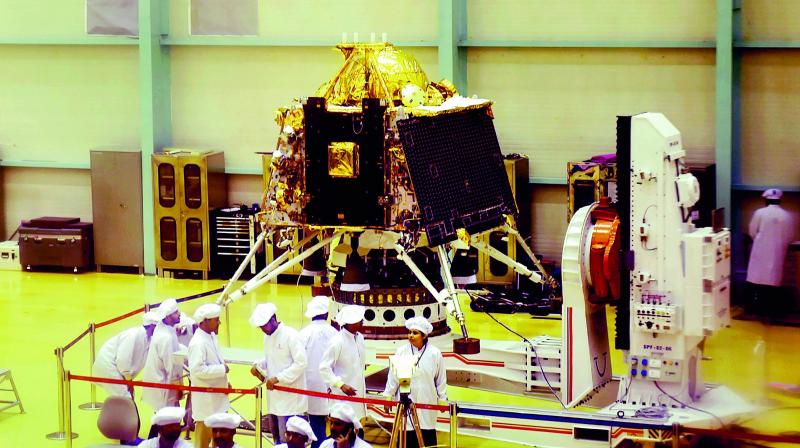Isro gears up for ‘most complex’ moon mission

Nellore: Indian Space Research Organisation (Isro) chairman Dr K. Sivan on Wednesday said that the launch of Chandrayaan-2 onboard GSLV MkIII-M1 is planned for July 15 at 2.51 am from the Satish Dhawan Space Centre, Shar, Sriharikota.
Dr Sivan said that the soft landing of the Vikram lander of Chandrayaan-2 on the Moon’s surface is likely to be on September 6. He said this while addressing over 150 regional, national and international media persons at Isro headquarters, Bengaluru on Wednesday.
The briefing included the scientific objectives, challenges and benefits of the mission.
The Isro chairman provided details on the orbiter, lander and rover as well as the challenging tasks of navigating to the Moon and inserting the spacecraft into lunar orbit.
Dr Sivan then specially mentioned about the highly demanding task of soft landing on the lunar surface and termed it as “15 terrifying minutes”.
Under the nearly Rs 1,000 crore mission, the landing on the moon near the South Pole would be on September 6 an uncharted territory..
The Lander, named after the father of the Indian space programme, Vikram Sarabhai, will touch down on a rugged lunar surface in the final descent, which, according to Sivan, would be the “most terrifying moment” of the mission.
“This 15 minutes is going to be terrifying to all of us not only people from Isro, but for entire India, because the space agency has never undertaken such type of complex flight.
This 15 minutes flight is the most complex mission Isro has ever undertaken,” he said.
The landing site, at about 70 degrees south latitude, is the southernmost for any mission, not attempted before by any country, according to Isro, as the Indian space agency eyed an ambitious feat after missing many dates.
Soft-landing on the south pole of the moon, a territory that has never been visited by any spacecraft, is considered the most challenging part of the mission.
Pointing out Chandrayaan-2 is going to South Pole, a place where nobody else has gone, Sivan said the entire scientific community of the nation and the globe were eagerly waiting for the mission.
According to him, there is both convenience and science involved for choosing the South Pole.
“From the science point of view, the south pole is under shadow region more than North Pole, so because of this special aspect of south pole, water is expected to be more there and also more minerals are expected to be there,” he added.
The spacecraft, with a mass of 3.8 tonne, has three modules — Orbiter, Lander (Vikram) and Rover (Pragyan).

